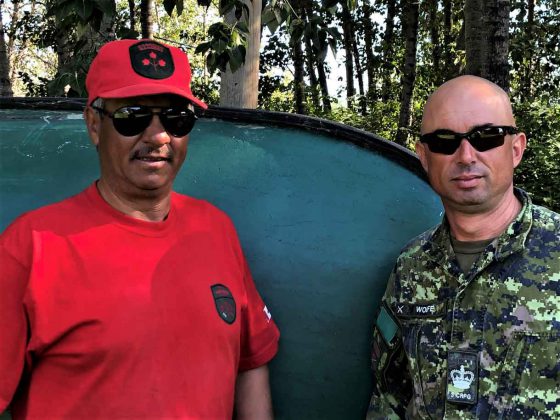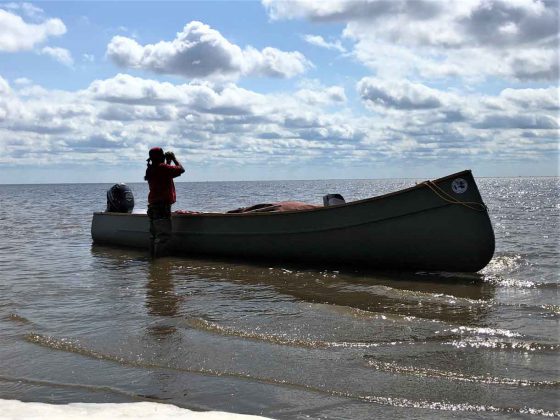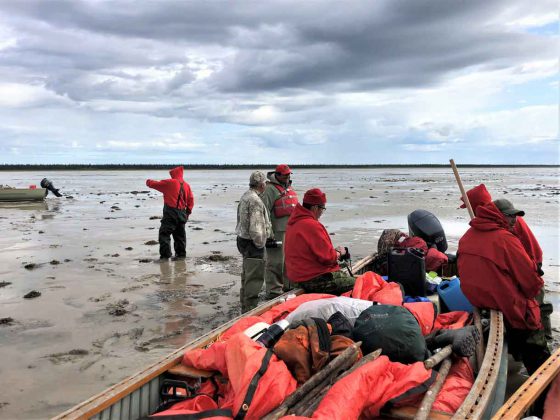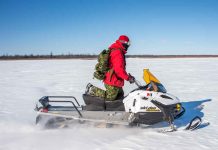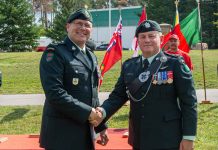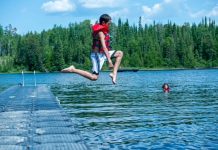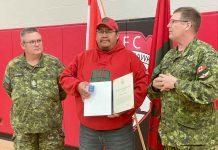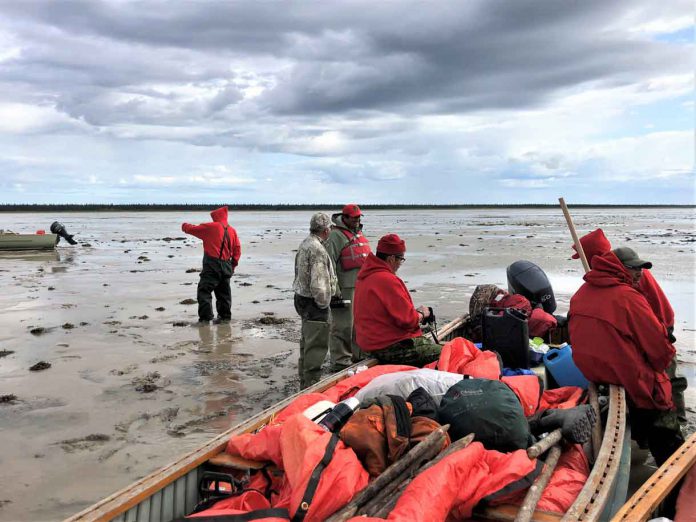
Canadian Rangers had to use gunshots to warn off a polar bear during their first patrol around Akimiski Island, a large uninhabited island in James Bay.
The Rangers travelled by freighter canoe and made camp on land during the week-long patrol.
“We saw a number of polar bears, about 20 in total,” said Warrant Officer Carl Wolfe, the Canadian Army instructor who led the patrol. “At one of our camps we encountered four bears and a fifth came in during the evening to within 100 feet of us. We fired a couple of warning shots and it took off.”
Akimiski Island, a bird sanctuary and maternity site for polar bears, is 19 kilometers from the mouth of the Attawapiskat River and the Cree community of Attawapiskat. All the islands in Hudson Bay and James Bay, including Akimiski, are part of Nunavut, while Attawapiskat is in Ontario. Akimiski is the 29th largest island in Canada.
The patrol’s Rangers, who are part-time army reservists, were from Attawapiskat, Fort Albany, and Kashechewan. Only one Ranger, Master Corporal Antoine Kataquapit, an experienced hunter and trapper from Attawapiskat, had previously travelled around the island and he acted as the patrol`s guide. Few hunters travel by land to the north side of the large island and very rarely by boat.
The patrol had to cope with four to six-foot waves, high winds, and tides that left mudflats of up to 4,000 meters when the tides were out.
“I’d never been in the waters on the north side of the island before,” said Ranger Maurice Gillies of Fort Albany. “It was a real adventure. But now I know what the other side of the island is like and so do the other Rangers. If we have an incident and we have to go out to help someone we will know where we are going and what we are going to encounter. It was a learning experience for me and pretty much the same for all the Rangers.”
The patrol provided the Rangers with valuable information, Warrant Officer Wolfe said.
“A lot of times when people have motor problems (with their boats) between Attawapiskat and Moose Factory,” he said, “they usually end up getting blown out to the south tip of Akimiski. At that tip there’s a bunch of sand bars, small islands, and shallow water and that’s where you are going to get caught up. Now we have local knowledge of that area for when we have to rescue someone.”
There are more than 600 Rangers in 27 First Nations across the Far North of Ontario. Every year they go to the rescue of hunters, trappers, fishermen, and others who get into trouble. They assist in evacuations caused by forest fires and floods. Since the beginning of 2016, they have rescued more than 100 people.
Patrols like the one around Akimiski Island provide Rangers with the training and knowledge to save lives and serve the people of Northern Ontario, Warrant Officer Wolfe said.
(Sergeant Peter Moon is the public affairs ranger for the 3rd Canadian Ranger Patrol Group at Canadian Forces Base Borden.)

